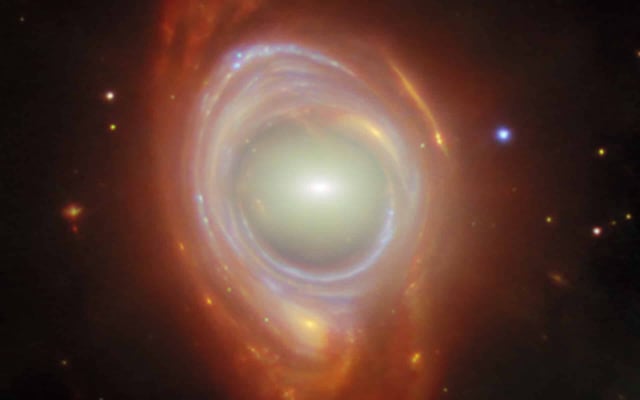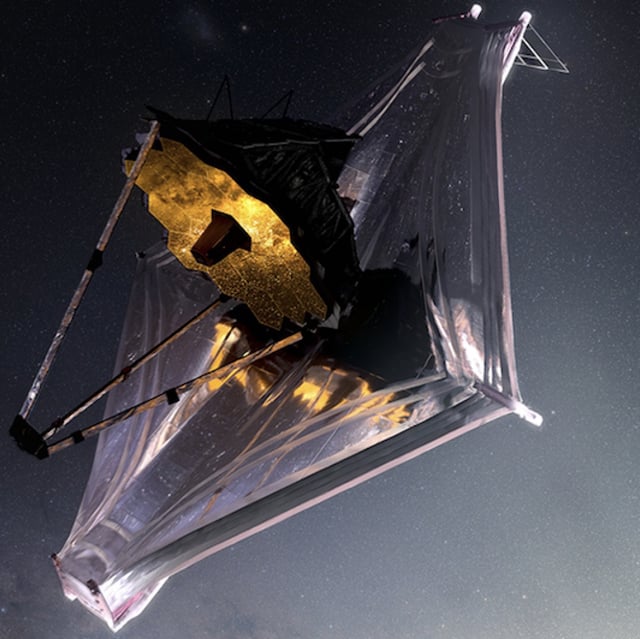Overview
- The James Webb Space Telescope captured a rare Einstein ring, a phenomenon caused by gravitational lensing, during the Strong Lensing and Cluster Evolution (SLICE) survey.
- Einstein rings occur when the mass of a foreground galaxy warps space-time, bending light from a background galaxy into a ring-like shape.
- The captured Einstein ring features a foreground elliptical galaxy and a background spiral galaxy, with visible details such as star clusters and gas structures.
- This discovery highlights the telescope's advanced infrared capabilities, allowing it to study faint and distant galaxies that would otherwise be inaccessible.
- The James Webb Space Telescope, a collaboration between NASA, ESA, and the Canadian Space Agency, continues to push the boundaries of cosmic exploration.

